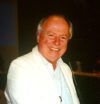The Warsaw Process: Slow Start, Clear Focus
TRANSCEND MEMBERS, 18 Feb 2019
René Wadlow – TRANSCEND Media Service
16 Feb 2019 – “This is a new era for the future and for prosperity for all the nations” Yusuf bin Alawi, Foreign Minister of Oman, said optimistically in Warsaw at the 13-14 February 2019 Ministerial Conference to Promote a Future of Peace and Security in the Middle East.
The sunrise of the new era may be showing its first rays on the horizon but is certainly not yet visible to all. At the same time that bin Alawi was speaking, the Presidents of Russia, Turkey and Iran were meeting in Sochi on the Black Sea to discuss the future of Syria. They were joined by the President of Belarus to show that Middle East issues are on the agenda of many.
The Warsaw Process follows a pattern set by the 1991 Madrid Conference more narrowly focused on the Arab-Israel dimension. The Madrid Conference was co-chaired by the U.S.A. and the U.S.S.R. The U.S. Secretary of State, James Baker, a long-time friend and advisor of President George H.W. Bush had spent a good number of months in preparation of Madrid Conference with repeated flights to the Middle East.
The Madrid Conference set up seven working groups which met after the conference to discuss arms control, regional security, economic development, environment, water, and refugees. All these issues had a regional dimension wider than those States directly involved in the conflict with Israel. In practice, although the working groups published some working papers and recommendations, no measures recommended were taken.
The Warsaw Process has set up working groups largely on the same lines. Thus it is useful to look at what may be different from 1991, and what non-governmental organizations might do beyond waiting for the new dawn to come up by itself. Non-governmental organizations were not invited to Warsaw nor asked to join the working groups although the U.S. delegation mentioned that there were U.S. “Think Tanks” working on Middle East issues.
At least in the public statements there were few ideas expressed that had not been heard many times before. The U.S. delegation, to no great surprise, stressed the negative role of Iran in the area, a view also stressed by Israel and some of the Arab States. “Iran is the greatest threat to peace and security in the Middle East” said Vice President Mike Pence, who headed the U.S. delegation delegation. The European States had worked hard to broaden the focus of the Warsaw conference from just an anti-Iran bash to a longer-range stabilization program. The shift was seen in the tone of the statements, but there were few, if any, European proposals. The Helsinki process leading to the Conference on Security and Cooperation in Europe was not stressed as a positive model for the Middle East.
There are only two positive advances over the 1991 Madrid Conference. The first is that the need for a regional approach is recognized from the start. More than an action-reaction model between Israel and its near neighbors, the Warsaw Process has a focus on the wider Middle East as an integrated system with exchanges of actions at different levels: economic, political but also social, religious, and cultural.
The second positive difference is the large loss of U.S. influence. 1991 was the end of the Cold War; the U.S.S.R was on the eve of breaking up. The U.S.A. was the only fighter still standing in the ring. Many governments thought that U.S. leadership was possible, even desirable. Since then, the attitudes within most States has changed, although no other government or group of governments such as the European Union, has taken on a leadership role. The loss of U.S. influence can lead to stagnation; there is no energy for change. Or there may be a “Civil Society Spring”.
It is on this possibility of a “Civil Society Spring” leading to positive changes in attitudes for which we must work. We cannot have a facile optimism. The “Arab Spring” has led to few permanent improvements. Progress can be reversed. However, the Arab-Israel conflicts have led to a good number of Track Two – informal diplomatic discussions and proposals – though creative Israel-Palestinian negotiations still seem far off. (1)
The Warsaw Conference may end up as only a “photo opportunity” and for Warsaw to be center stage for a short time, or we may work to have the Warsaw Process be the real start of a new era.
Note:
1) For a useful overview of non-official peace proposals, see; Hussein Agha, Shai Feldman, Ahmad Khalidi and Zeev Schiff. Track II Diplomacy: Lessons from the Middle East (Cambridge, MA: The MIT Press, 2003)
______________________________________
 René Wadlow is a member of the TRANSCEND Network for Peace Development Environment. He is President of the Association of World Citizens, an international peace organization with consultative status with ECOSOC, the United Nations organ facilitating international cooperation and problem-solving in economic and social issues, and editor of Transnational Perspectives.
René Wadlow is a member of the TRANSCEND Network for Peace Development Environment. He is President of the Association of World Citizens, an international peace organization with consultative status with ECOSOC, the United Nations organ facilitating international cooperation and problem-solving in economic and social issues, and editor of Transnational Perspectives.
This article originally appeared on Transcend Media Service (TMS) on 18 Feb 2019.
Anticopyright: Editorials and articles originated on TMS may be freely reprinted, disseminated, translated and used as background material, provided an acknowledgement and link to the source, TMS: The Warsaw Process: Slow Start, Clear Focus, is included. Thank you.
If you enjoyed this article, please donate to TMS to join the growing list of TMS Supporters.

This work is licensed under a CC BY-NC 4.0 License.